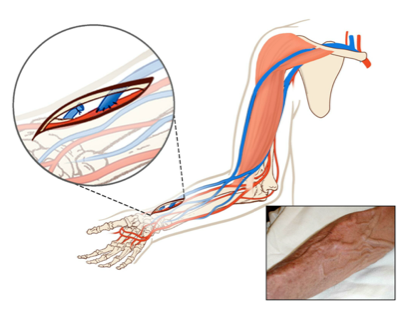ASN Board Review Course & Update: Register by 6/20 for Discounted Rate!
Kidney Comics: T-Cell Mediated Rejection (Kidney Transplant)
Skeleton Key Group Case #33: Atrocious Acidosis
Origins of Renal Physiology Course: Fellows 2024
2024 NephMadness Tournament Challenge: Bracket Submissions Due March 31st!
Continuous renal replacement therapy Education Module
Applications open for the WIN Fellow School for Leadership Education
American Transplant Congress 2024: Medical Student & Resident Travel Grant Applications Due 3/11
High Output Cardiac Failure and Pulmonary Hypertension in Kidney Transplant Recipients
KDOQI Access Guideline 1: Patient First- ESRD Life-Plan
Brian Rifkin, MDHattiesburg ClinicASDIN Education Committee KDOQI Clinical Practice Guideline for Vascular Access: 2019 Update (ajkd.org) Introduction Dialysis access planning and placement are cornerstones in the timely initiation of dialysis therapy. Strategies from “Fistula First” to “Catheter Last”…
Know When to Hold ‘Em: Anticoagulation Management in Kidney Patients Undergoing Invasive Procedures
Introduction Patients with chronic kidney disease (CKD) and end-stage kidney disease (ESKD) are frequently on anticoagulation (AC) due to their increased risk of stroke and thromboembolism, particularly from atrial fibrillation. Management of AC in kidney patients undergoing invasive…
Troubleshooting Two Vascular Access Cases – Early Cannulation Graft and the HeRO graft
Clinical Scenario 1: Mr.T is a 68 year old male with long standing uncontrolled Type 2 diabetes mellitus complicated by diabetic retinopathy and neuropathy. Over the years he has had progression of chronic kidney disease with subnephrotic range…
An Overview of Dialysis Access-associated Steal Syndrome
Introduction Dialysis Access-Associated Steal Syndrome (DASS) has been reported in up to 6% patients with an arteriovenous (AV) access. However, the true incidence of clinically significant DASS, requiring surgical intervention, may be lower as reported in a prospective…
Hemodialysis Catheter Complications (And What To Do About Them)
Introduction Ideally, patients with end-stage kidney disease would begin hemodialysis with a mature, functional arteriovenous access. However, in certain subgroups of patients, central venous catheters (CVCs) are unavoidable. Even for patients who ultimately use an arteriovenous fistula (AVF)…
A Clinical Discussion of AV Fistula and Graft Complications: Part 2
Last week we covered 5 clinical scenarios involving arteriovenous fistula and graft complications. We now discuss another 5 common scenarios as part 2 of the series. Please note: these cases are vignettes created for educational purposes and patient…
A Clinical Discussion of AV Fistula and AV Graft Complications: Part 1
We learn the concept of ‘Fistula First’ since day 1 of fellowship. However primary failure rates have been rather high, with variable numbers reported in different literature. In addition, other complications related to AV fistula and AV graft…
How to Examine a Vascular Access: Part 2 The Physical Exam
Last week we looked at the basics and useful terminology employed for examining a vascular access. Now we will focus on specifics of the physical exam. Physical Examination Inspection (Look) Visual inspection can provide important clues regarding the…
How to Examine a Vascular Access: Part 1 The Basics
Introduction Physical examination is a quick and inexpensive way of diagnosing stenosis and other causes of vascular access dysfunction. Its ability to reliably detect stenotic lesions compared with ultrasound and angiography (the gold standard), has repeatedly been demonstrated….
Endovascular Technique for Arteriovenous Fistula Creation
Introduction The surgical technique for creating an arteriovenous fistula (AVF) has existed since 1966. AVFs are the recommended vascular access for end stage kidney disease patients who require dialysis, but only 14% of patients in the United States…










